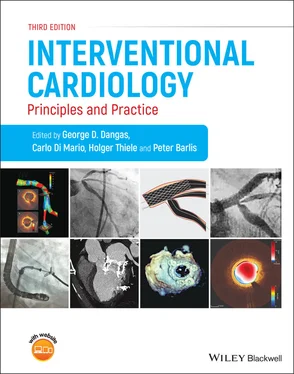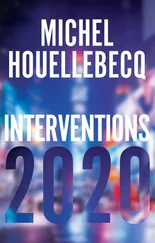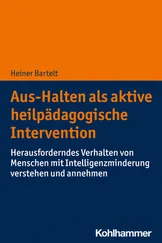Interventional Cardiology
Здесь есть возможность читать онлайн «Interventional Cardiology» — ознакомительный отрывок электронной книги совершенно бесплатно, а после прочтения отрывка купить полную версию. В некоторых случаях можно слушать аудио, скачать через торрент в формате fb2 и присутствует краткое содержание. Жанр: unrecognised, на английском языке. Описание произведения, (предисловие) а так же отзывы посетителей доступны на портале библиотеки ЛибКат.
- Название:Interventional Cardiology
- Автор:
- Жанр:
- Год:неизвестен
- ISBN:нет данных
- Рейтинг книги:4 / 5. Голосов: 1
-
Избранное:Добавить в избранное
- Отзывы:
-
Ваша оценка:
- 80
- 1
- 2
- 3
- 4
- 5
Interventional Cardiology: краткое содержание, описание и аннотация
Предлагаем к чтению аннотацию, описание, краткое содержание или предисловие (зависит от того, что написал сам автор книги «Interventional Cardiology»). Если вы не нашли необходимую информацию о книге — напишите в комментариях, мы постараемся отыскать её.
Interventional Cardiology
Interventional Cardiology
Interventional Cardiology — читать онлайн ознакомительный отрывок
Ниже представлен текст книги, разбитый по страницам. Система сохранения места последней прочитанной страницы, позволяет с удобством читать онлайн бесплатно книгу «Interventional Cardiology», без необходимости каждый раз заново искать на чём Вы остановились. Поставьте закладку, и сможете в любой момент перейти на страницу, на которой закончили чтение.
Интервал:
Закладка:
12 PART IV: Vascular Disease for the Interventionalist SECTION I: Cerebrovascular Disease CHAPTER 71: Acute Stroke Intervention Acute stroke therapy: Background and evidence Clinical exam Imaging Laboratory tests Cerebral angiography Intervention (Example of an acute middle cerebral artery occlusion intervention illustrated in Videos 71.1–10 and Figure 71.1–7). What is a successful angiographic result? The challenge of tandem occlusions Distal cerebral vessel occlusions Posterior circulation and basilar artery occlusions Variations in thrombectomy techniques Performance of the procedure with or without general anesthesia Complications Interventional cardiologists treating acute ischemic strokes with mechanical thrombectomy ConclusionsReferences CHAPTER 72: Carotid Artery Angioplasty and Stenting Introduction Evolution of carotid angioplasty and stenting Overview of clinical trials regarding carotid angioplasty and stenting Current practice guidelines/patient selection Anatomic considerations Overview of technique Transcarotid Artery Revascularization (TCAR) Comparison of different methods of embolic protection Complications after CAS Stent design Emerging literatureReferences CHAPTER 73: Cerebral Aneurysms Introduction Diagnosis Indications for endovascular treatment Historical background General considerations Tools Ruptured aneurysmsReferences SECTION II: Aorta and Branch Diseases CHAPTER 74: Management of Acute Aortic Syndromes Aortic dissection Epidemiology Presentation and diagnosis Classification Penetrating aortic ulcer Intramural hematoma Aortic transectionReferences CHAPTER 75: Thoracic Endovascular Aortic Repair Introduction Etiology Indications for repair TEVAR devices Operative planning Operative details Evidence to support TEVAR Future direction ConclusionsReferences CHAPTER 76: Endovascular Aortic Aneurysm Repair Background/history Measurements Etiology Indications Ruptured AAA Diagnostic imaging Anatomic requirements Endoleak Evidence ConclusionsReferences CHAPTER 77: Fenestrated and Branched Endografts Introduction Evidence to support use Imaging and preoperative planning Devices ConclusionsReferences CHAPTER 78: Acute and Chronic Mesenteric Ischemia Introduction Acute mesenteric ischemia Chronic mesenteric ischemia Technical considerations Post‐procedure follow‐up Complications ConclusionsReferences CHAPTER 79: Renal Artery Interventions Renal artery stenosis Natural history and clinical outcomes Indications for screening Diagnosis Treatment options for ARAS Technical aspects of renal endovascular intervention for renal artery stenosisReferences CHAPTER 80: Endovascular Interventions for the Pelvis Introduction Uterine artery embolization Prostatic artery embolization Penile revascularization ConclusionsReferences SECTION III: Peripheral Arterial and Venous Disease CHAPTER 81: Iliac Interventions Clinical presentation and diagnosis Percutaneous intervention Aorto‐iliac stenoses Chronic totally occlusive lesions Stent selection: self‐expandable and balloon expandable; covered and uncovered Bifurcation lesions Predictive factors Complications ConclusionsReferences CHAPTER 82: Superficial Femoral Artery Interventions Treatment of patients with PAD Endovascular treatment Contemporary endovascular treatment Balloon angioplasty, bare metal stent Drug‐eluting stents/balloons ConclusionsReferences CHAPTER 83: Popliteal Artery Interventions Interventions for popliteal artery disease Balloon angioplasty Stenting Adjunctive endovascular technologies Atherectomy Popliteal artery aneurysms ConclusionsReferences CHAPTER 84: Below the Knee Interventions in Critical Limb Ischemia Background Evaluation of the lower extremity arterial system Approach to BTK intervention Endovascular management of below the knee critical limb ischemia Percutaneous transluminal angioplasty Modified angioplasty techniques Complications of endovascular procedures ConclusionsReferences CHAPTER 85: Subclavian, Vertebral, and Upper Extremity Vascular Disease Subclavian and upper extremity arterial disease Vertebral artery diseaseReferences CHAPTER 86: Antithrombotic Strategies in Endovascular Interventions Pathophysiology Aspirin Ticlopidine Clopidogrel Other ADP receptor antagonists Dipyridamole Vorapaxar Low molecular weight heparins Glycoprotein IIb/IIIa receptor antagonists Vitamin K antagonist Cilostazol Bivalirudin Direct Oral Anticoagulant Agents (DOACs) ConclusionsReferences CHAPTER 87: Chronic Venous Insufficiency Introduction Predisposing factors Pathogenesis Clinical manifestations QOL and economic impact Diagnosis Treatment Non‐invasive study: venous reflux disease Non‐invasive study: chronic venous flow obstruction Non‐invasive study: muscle pump dysfunctionReferences
13 Index
14 End User License Agreement
List of Tables
1 Chapter 1 Table 1.1 Comparison of plaque characteristics evaluation. Table 1.2 Serologic markers of vulnerable plaque/patient.
2 Chapter 2 Table 2.1 Types of closure devices.
3 Chapter 3 Table 3.1 Common diagnostic and guide catheter shapes for TRA. Table 3.2 Complications of transradial access.
4 Chapter 4 Table 4.1 Angiographic projections and optimal visualization of left and rig... Table 4.2 Popular view combinations for diagnostic angiography with benefits...
5 Chapter 5 Table 5.1 Guide catheter inner lumen size by manufacturer and outer lumen si... Table 5.2 The advantages and disadvantages of smaller versus larger catheter... Table 5.3 Comparability of curve sizes for different shapes of left sided gu... Table 5.4 The selection of a guidewire depends on the characteristics requir... Table 5.5 Classification of guidewires. Table 5.6 List of commonly used ultra low profile PTCA balloon.
6 Chapter 6 Table 6.1 Three main types of outcome data are analyzed in contemporary stud... Table 6.2 Common measures of association and calculations. Table 6.3 Key components of sample size/power calculations. Table 6.4 Impact of incorrect sample size assumptions on study power.
7 Chapter 9 Table 9.1 Comparison of optical coherence tomography systems.
8 Chapter 11 Table 11.1 Optimal secondary prevention in stable coronary artery disease. Table 11.2 ESC Guideline indications for revascularization in patients with ... Table 11.3 ESC guidelines for the type of revascularization (CABG or PCI) in...
9 Chapter 12 Table 12.1 The GRACE and TIMI scores for assessing the prognosis of patients... Table 12.2 Guideline recommendations on pre‐ and periprocedural therapy for ...
10 Chapter 13 Table 13.1 Key large‐cohort clinical trials involving 1st and subsequent gen... Table 13.2 Fibrinolytic agents in STEMI [4].
11 Chapter 14 Table 14.1 SCAI Classification of cardiogenic shock.
12 Chapter 15Table 15.1 Summary of the main trials comparing coronary artery by‐pass graf...
13 Chapter 16Table 16.1 Randomized controlled studies comparing provisional SB stenting v...
14 Chapter 17Table 17.1 Guideline recommendations for stable multivessel coronary artery ...Table 17.2 Guideline recommendations for STEMI patients with multivessel cor...Table 17.3 Revascularization strategies in patients with multivessel coronar...Table 17.4 SYNTAX score and SYNTAX‐based models for risk stratification in m...
15 Chapter 21Table 21.1 Incidence of restenosis after first and new generation DES implan...Table 21.2 Predictors of restenosis.
16 Chapter 22Table 22.1 Anatomic, hemodynamic and clinical criteria used to identify high...Table 22.2 Characteristics of common percutaneous mechanical circulatory sup...
17 Chapter 26Table 26.1 National Heart, Lung and Blood Institute (NHLBI) classification s...Table 26.2 Modified Ellis classification of coronary perforations along with...Table 26.3 Risk factors for coronary perforation.
18 Chapter 27Table 27.1 Common vascular complications grouped by type of vascular access....Table 27.2 Common vascular complications related to femoral artery access an...Table 27.3 Risk Factors for bleeding complications related to femoral artery...Table 27.4 Techniques to prevent femoral artery access complications and sup...Table 27.5 Commonly used vascular closure devices (VCD) and mechanisms of ac...Table 27.6 Incidence of various types of vascular complications after percut...
Читать дальшеИнтервал:
Закладка:
Похожие книги на «Interventional Cardiology»
Представляем Вашему вниманию похожие книги на «Interventional Cardiology» списком для выбора. Мы отобрали схожую по названию и смыслу литературу в надежде предоставить читателям больше вариантов отыскать новые, интересные, ещё непрочитанные произведения.
Обсуждение, отзывы о книге «Interventional Cardiology» и просто собственные мнения читателей. Оставьте ваши комментарии, напишите, что Вы думаете о произведении, его смысле или главных героях. Укажите что конкретно понравилось, а что нет, и почему Вы так считаете.










